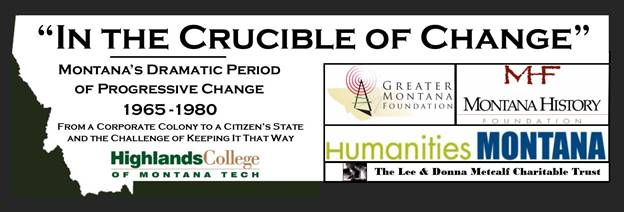
Document Type
Transcript
Publication Date
Fall 2015
Abstract
Beyond the challenge of crafting a new state Constitution that empowered the people and modernized and opened up state and local government in Montana, the Constitutional Convention delegates, as they signed the final document, looked forward to the arduous task of getting it ratified by the electorate in a short ten week period between the end of the convention on March 24 and the ratification election of June 6, 1972. While all 100 delegates signed the draft Constitution, not all supported its adoption. But the planning about how to get it adopted went back to the actions of the Convention itself, which carefully crafted a ballot that kept “hot political issues” from potentially killing the entire document at the polls. As a result, three side issues were presented to the electorate on the ballot. People could vote for or against those side issues and still vote to ratify the entire document. Thus, the questions of legalizing gambling, having a unicameral legislature and retaining the death penalty were placed separately on the ballot (gambling passed, as did the retention of the death penalty, but the concept of a one-house legislature was defeated). Once the ballot structure was set, delegates who supported the new Constitution organized a grassroots, locally focused effort to secure ratification – thought hampered by a MT Supreme Court decision on April 28 that they could not expend $45,000 in public monies that they had set aside for voter education. They cobbled together about $10,000 of private money and did battle with the established political forces, led by the MT Farm Bureau, MT Stockgrowers’ Assn. and MT Contractors Assn., on the question of passage. Narrow passage of the main document led to an issue over certification and a Montana Supreme Court case challenging the ratification vote. After a 3-2 State Supreme Court victory, supporters of the Constitution then had to defend the election results again before the federal courts, also a successful effort. Montana finally had a new progressive State Constitution that empowered the people, but the path to it was not clear and simple and the win was razor thin.
The story of that razor thin win is discussed in this chapter by the two youngest delegates to the 1972 Constitutional Convention, Mae Nan Ellingson of Missoula and Mick McKeon, then of Anaconda. Both recognized “Super Lawyers in their later professional practices were also significant players in the Constitutional Convention itself and actively participated in its campaign for ratification. As such, their recollections of the effort provide an insider’s perspective of the struggle to change Montana for the better through the creation and adoption of a new progressive state Constitution “In the Crucible of Change.”
Recommended Citation
(Robinson) Ellingson, Mae Nan; McKeon, Mick; and Barrett, Evan, "Transcript for Episode 25: Razor Thin Win: The ConCon Ballot - The Campaign - The Ratification Vote - The Court Fight - In the Crucible of Change" (2015). Crucible Episode Transcripts (old). Paper 25.
http://digitalcommons.mtech.edu/crucible_transcripts/25
